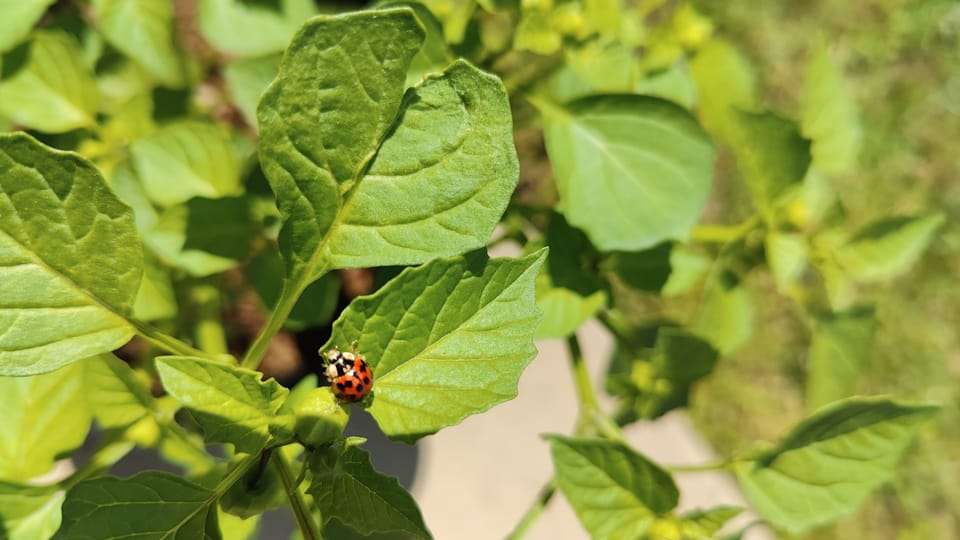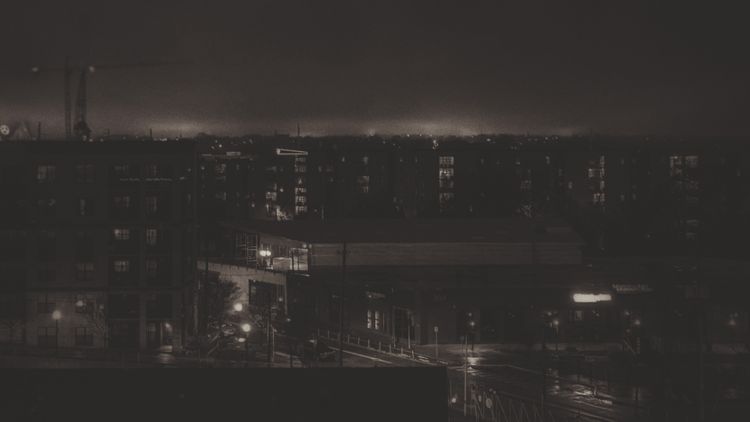New Neighbors

The radishes we planted in true spring never grew beyond seedlings. In infancy, a seedling of one crop looks much like that of another: it can be easy to confuse a pepper for a tomato, or a flower for a radish. A scrawny stem pushes through the soil topped by two leaves smaller than a child’s pinky nail, tinted a color I like to call “baby green.” Later the plant grows its first true leaves, in little spines like a carrot or jagged edges as a tomato, tiny mimics of the leaf they’ll eventually become.
Some of our radishes grew their true leaves. Stemmy extensions leapt from between those first two suncatchers, topped by dark leaves shaped like an oblong heart, edges just barely curling in on themselves. But that was to be it for our first radishes. Fixed in the soil as days passed with no additional growth, just a yellowing of the leaves, the plants losing vitality. Once the drooping, limp limbs of our failed radishes turned brown, we reluctantly pronounced the experiment a failure and planted a second batch of seeds. These fared a little better, more this time growing true leaves and a select few even bulbing out beneath the soil into a bonafide radish. But the true winners — the only to grow larger than an almond — were the ones in the pot the neighborhood cat briefly used as a litter box, during the period between the successive plantings. We’d noticed kicked-up soil some mornings but paid little attention. On the second sowing we found the cat’s droppings and carefully removed them while pinching our noses shut. “Grey Boy” was what we called the neighborhood cat – I often watch him saunter through our yard on his way to explore the creek across the street – and we couldn’t blame him for picking our planter as his litter box. Treading on dubiously sourced guidance we’d bought sand to supplement the soil mixture. Uniformity would lead to well-formed crop, we'd been told. But we’d bought play sand and those little rocks held onto moisture like a vice and we soon realized our fresh soil mix spread so diligently amongst our planters was tainted, poisoned by this wet mass. We’d scoop out cups of the bad soil and dilute the remaining with each successive sowing. The play sand continued to plague our plants with a decreasing efficacy.
As spring progressed we took our neighborhood walks later and later in the evening, tracking the sun’s rise in the sky. Passing Grey Boy’s house we were met with the tiny faces of grey kittens peeking out from under the porch; Grey Boy had children. Weeks went by where we’d check the porch and have no luck seeing the kittens again. Instead, we once saw a racoon looking out from the wide gutter, leering at a collection of trash cans, button nose wiggling to smell the refuse. Trash day was tomorrow. Two steps closer and it scattered, hiding in the drains beneath the roads. I hadn’t known there were racoons in this neighborhood.
Our beef tomato died a slow, horrible death, its veins fading into a velvety purple and leaves growing ashen. Plant death looks like death. We repotted it once, too, spreading pinches of lime – the chemical, not the citrus – in the new soil. It didn’t help.
My partner Nick found three baby robins under the holly tree. All day the parents flew from lawn to lawn, nabbing worms from the warm earth. One might expect a robin smells their prey wiggling below the grass, or perhaps feel the vibrations reverberating up their twiggy legs. It’s really much simpler than that: they dive their beaks into the ground and watch the newly created hole to catch movement.
One baby robin was visibly unwell, underdeveloped and misshapen. It sat in the shade of the holly tree, seemingly unable or unwilling to move, breathing raggedly while its siblings hopped freely through the yard. The healthy robins explored until their bravery ran out and would find some nook to hide in. You’d never spot them unless you scanned your eyes across the ground slowly, but once you did, they grasped your attention. Glassy eyes fixed upon your large form and they’d make a primitive, creaking sound as they learned to caw and chirp, yelling up at you. That first night we used gloved hands to gently place the sick robin in a cardboard box affixed to the fence with zip ties – we worried Grey Boy might eat the baby. I worried for the other birds, too, but this was how they were supposed to be, Nick told me. In the morning we found the sick bird’s little body lying crooked and still, a pus-like liquid spread across the paper towel lining the cardboard. We buried it by the side of the house. It felt odd to bury a being without saying anything so I told the bird I was sorry and I’d watch after its siblings. Nick placed a rock to mark the spot and I now find myself avoiding that part of the yard. I saw one of the siblings the next day, then none after that. I hoped they had grown quickly and safely but didn’t quite believe it.
Later a robin made a nest in the crook of the drainpipe hanging below the eaves. I watched it through the bay window in the kitchen and the swoop of that bird’s beak to tail while sitting its nest struck me like no shape has before, something as simple as a single curve that I think about on a near daily basis, the image trapped somewhere in the back left corner of my mind. The bird had made its nest on the outside of our bedroom, and as I fell asleep I imagined the distance from the crown of my head to the wall, through the plaster and brick, thinking of the mother bird just on the other side. One night brought a terrible storm and I realized she was sleeping closer to us than I had to my parents in my childhood home. Eventually we saw her at the nest with a decreasing frequency. We’d never heard any chitters of baby birds.
I watch now as a robin hops up to the blueberry bush, yellow trident feet grasping at the knobbed branches. It’s our second year with this blueberry plant and it moved with us from its 6th floor balcony perch to the patio where it now resides, happily growing in its new, spacious pot. The branch hardly bends under the bird’s weight, as if the robin is more air than being, and it snaps off a blueberry with its beak and flies away. I know I should put fabric over the bush to protect the fruit, but somewhere in my heart I like to believe the robin is one of the babies that grew up in my yard. I don’t look up what a robin should look like at three months old. I find life is gentle if you let it be.
